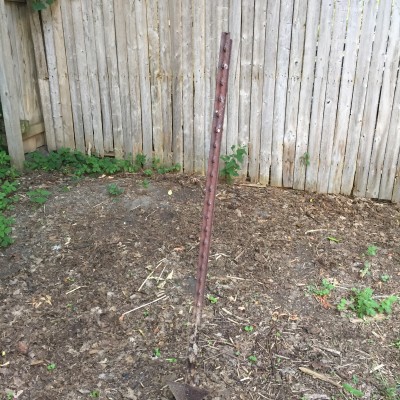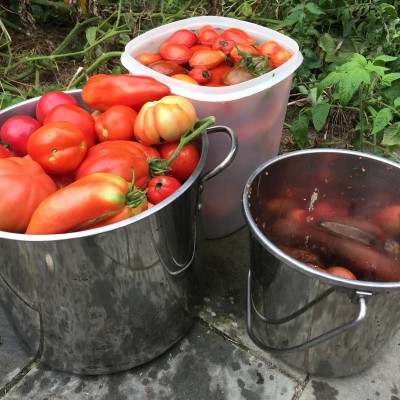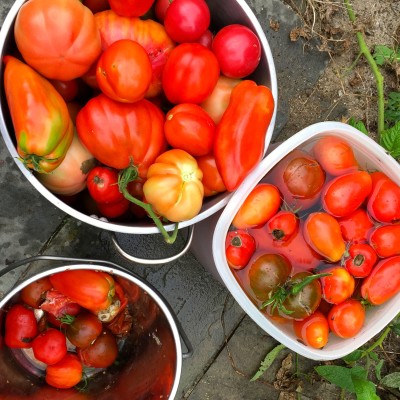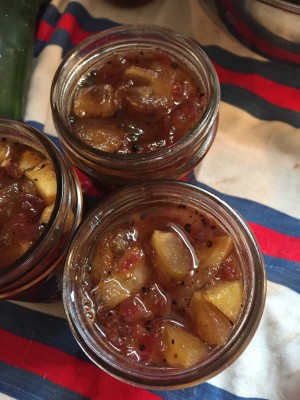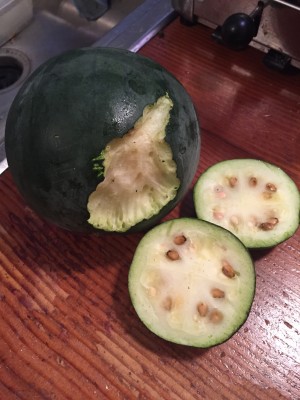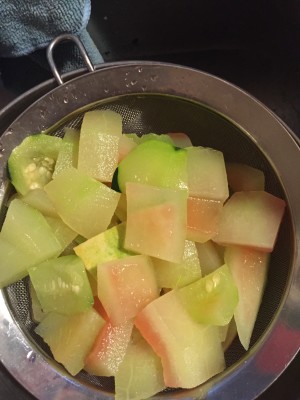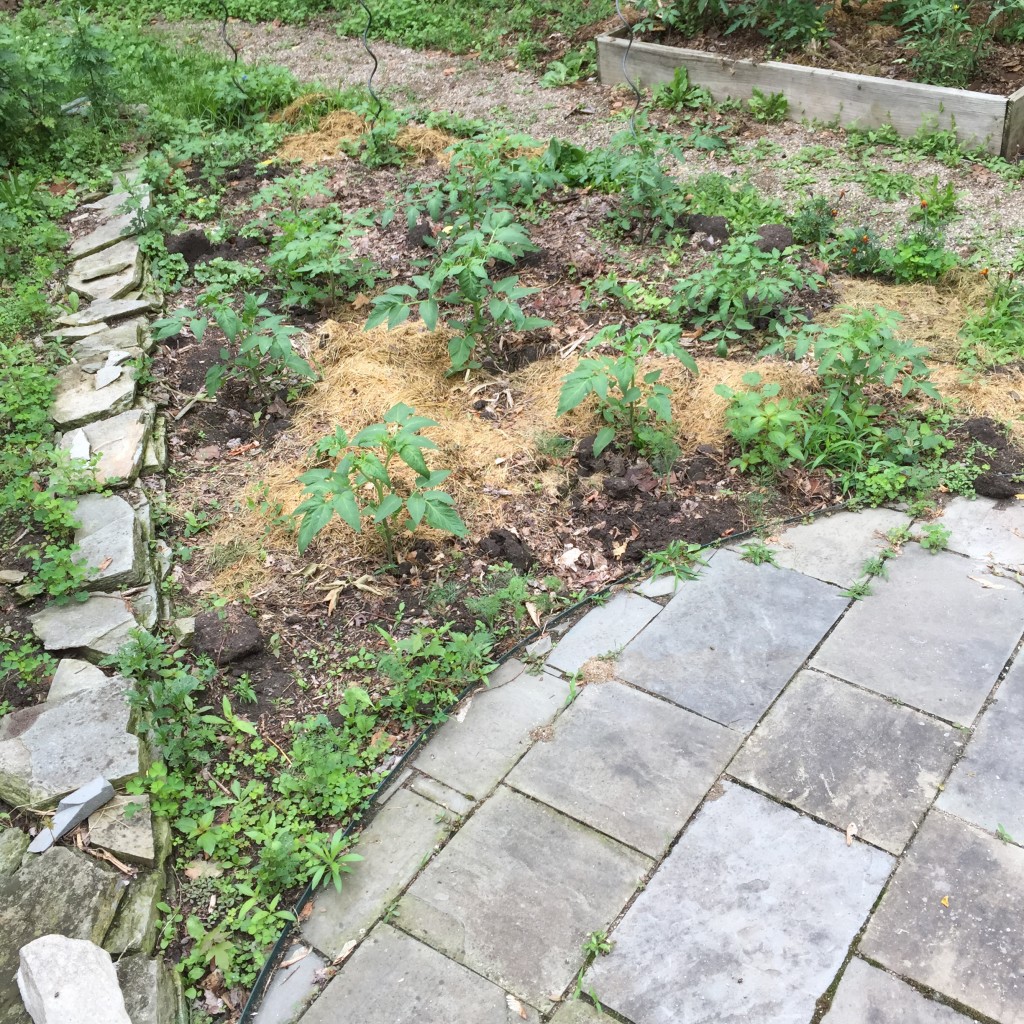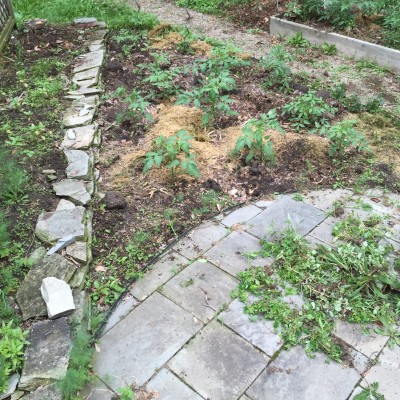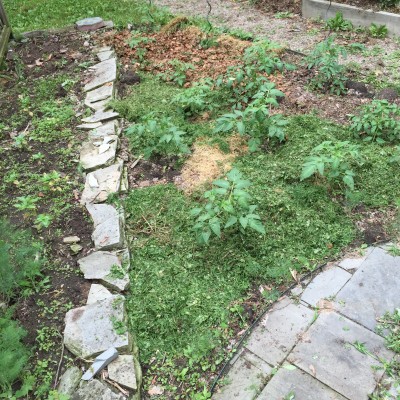I had a couple minutes before work and instead of strolling through the garden, I took steps toward our new orchard. Quite literally.
Janice and I dreamed about filling the “back lot” of the property with fruit trees even before we purchased it. Various obstacles impeded this dream, including several scrub trees and a rather formidable pile of slate left from the path and patio put in by the previous owner. We’ve had many other tasks around the garden but whenever we had a chance, we’d work to make our orchard just a bit more real.
We chopped down the undesirable trees during the first fall — a FAR bigger task than we first imagined. We then spent much of the next year, chopping up the branches and burning them in the rocket stove. This summer, I challenged our son to help remove the stumps… and before I knew it, he’d removed two of them. He also made short work of relocating the pile of stone. I mowed down the weeds and trimmed back the overhanging branches.
This September marks the second fall we’ve been in the “new house,” and the “back lot” finally started to resemble the vision we’d had of it in our dreams. Except for the trees.
But I took steps this morning to make those trees feel a bit more real. The “steps” I took were to pace off the distances appropriate for the size trees we’re planting. Right where the trunk of each dream tree will go, I sunk a fence post. Now we have a visual reminder of where each tree will be. I “knew” that three trees would fit along the back row but it’s gratifying to see them, not too close to the fence and not too close to each other.
When the weather cools off and the constant tasks of harvest subside, I hope to dig a 3′ hole for each intended location and to fill it with compost in anticipation of planting next spring. But even in the meantime, that row of stakes will also allow us to walk around our temporary “dream trunks” to see if we can imagine having a tree there for the rest of our lives.
